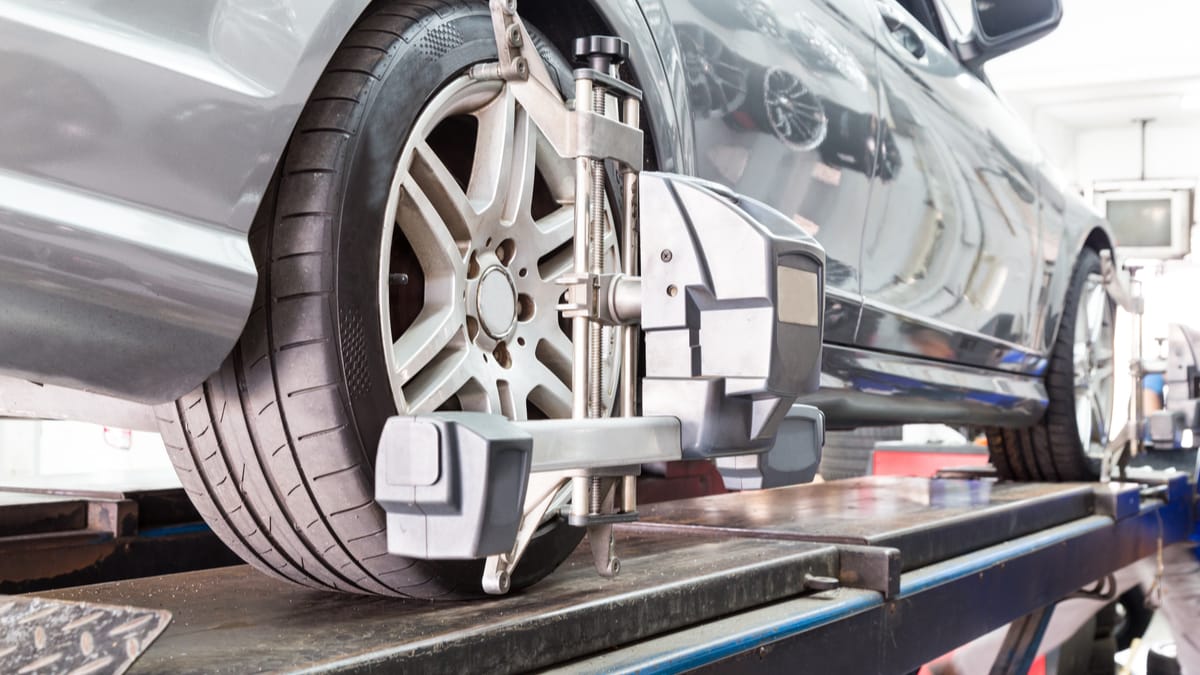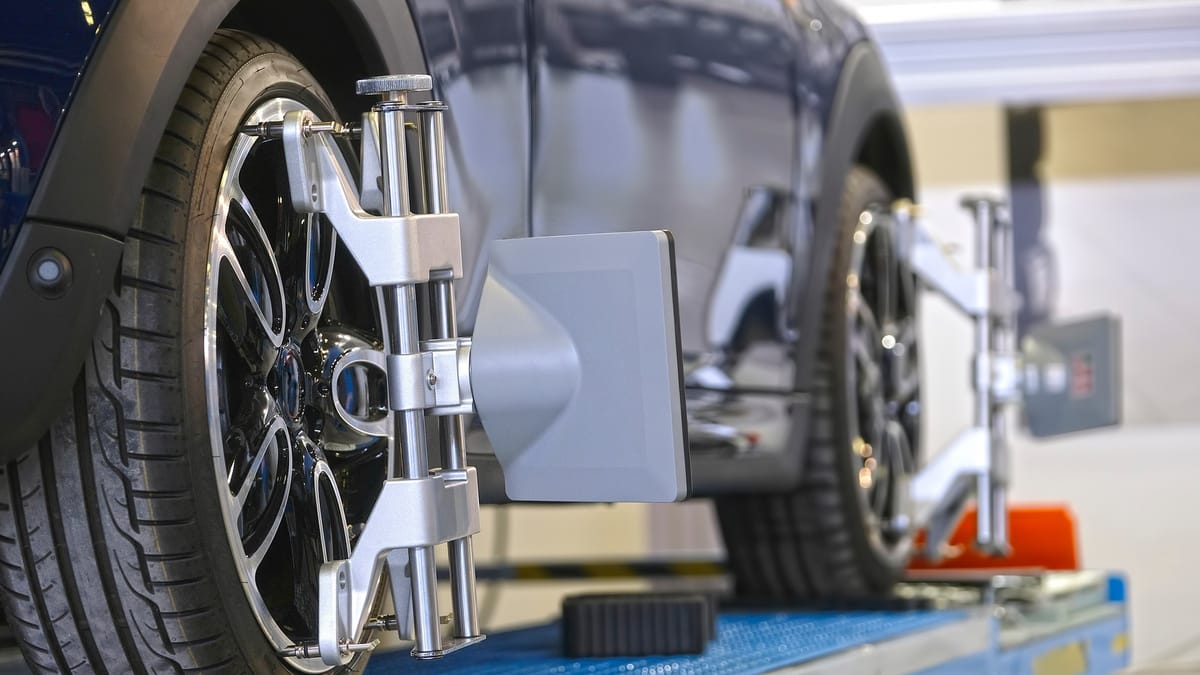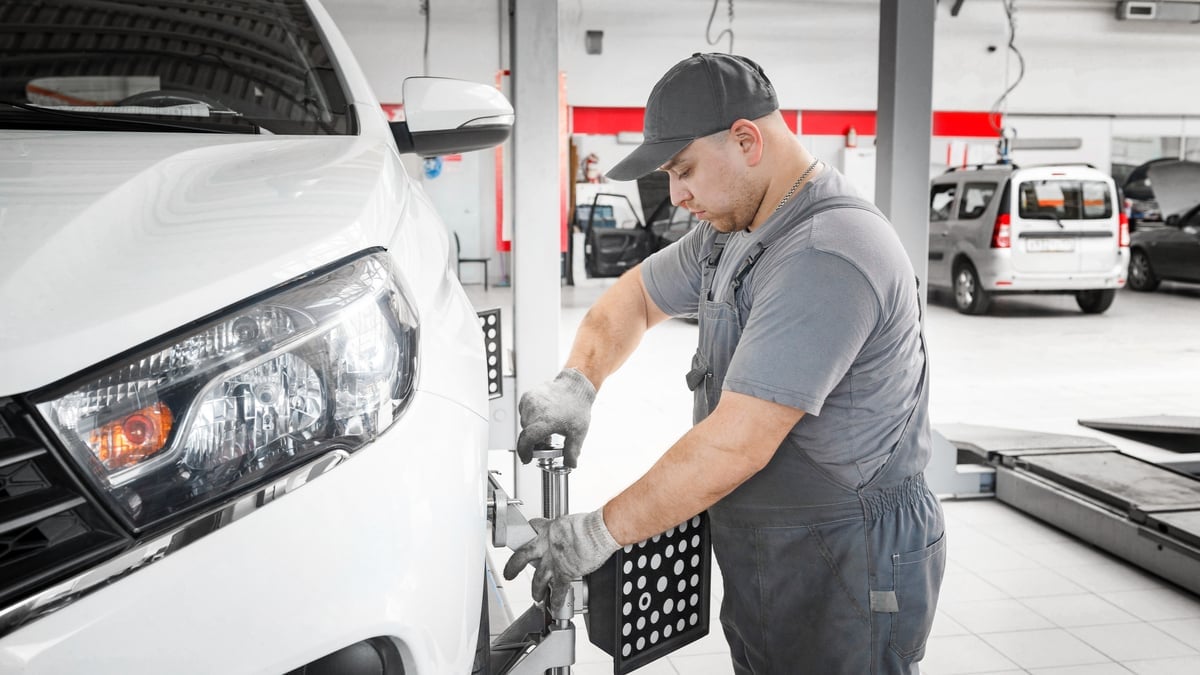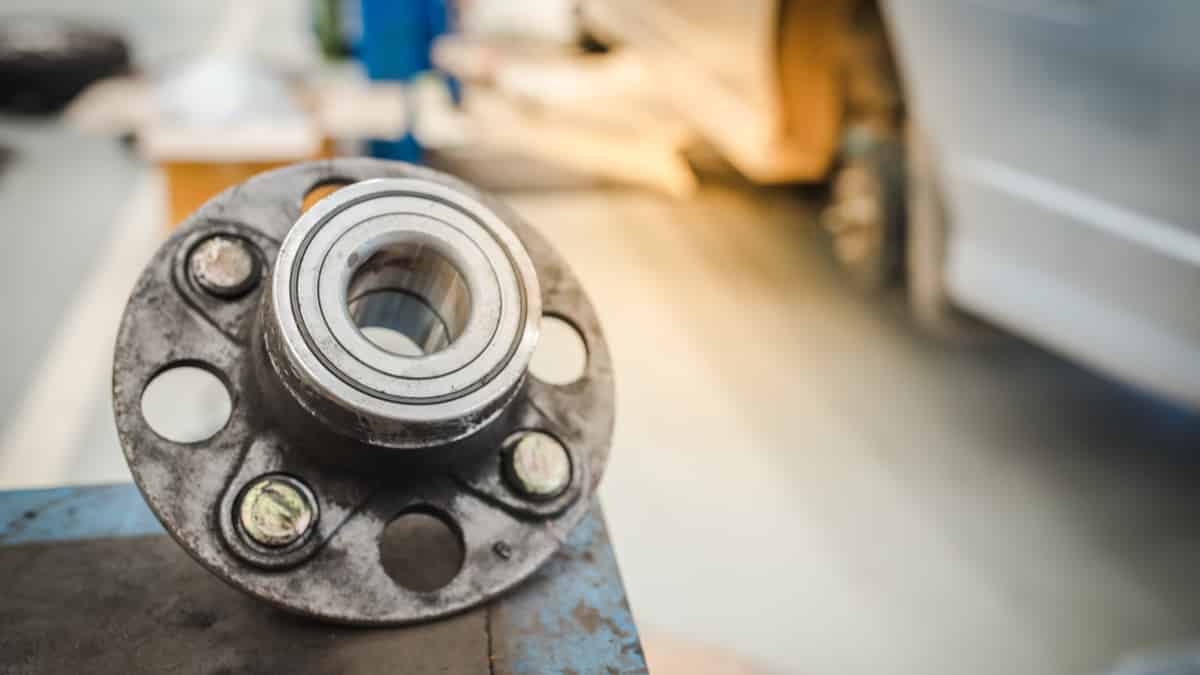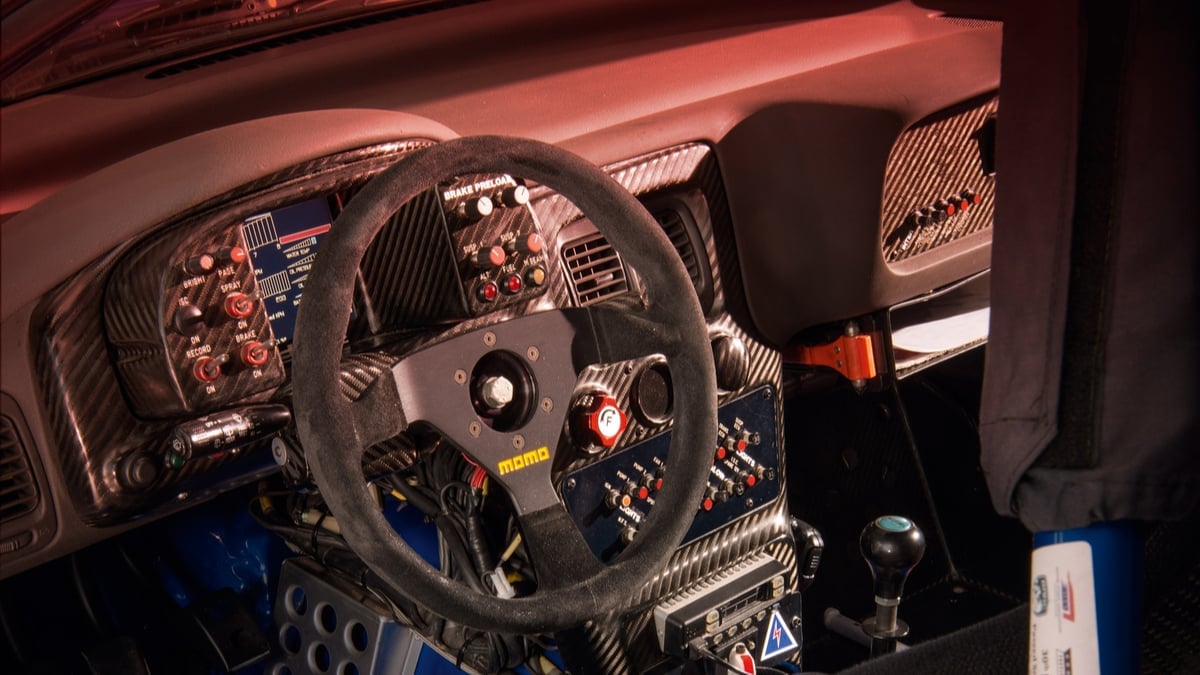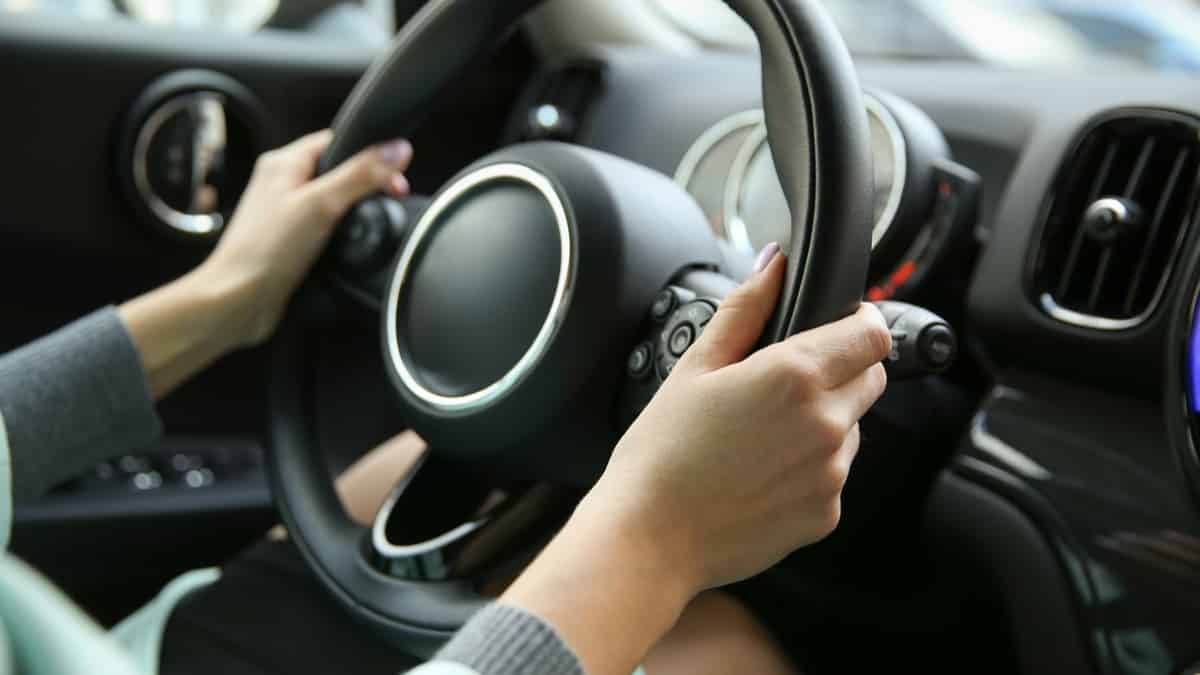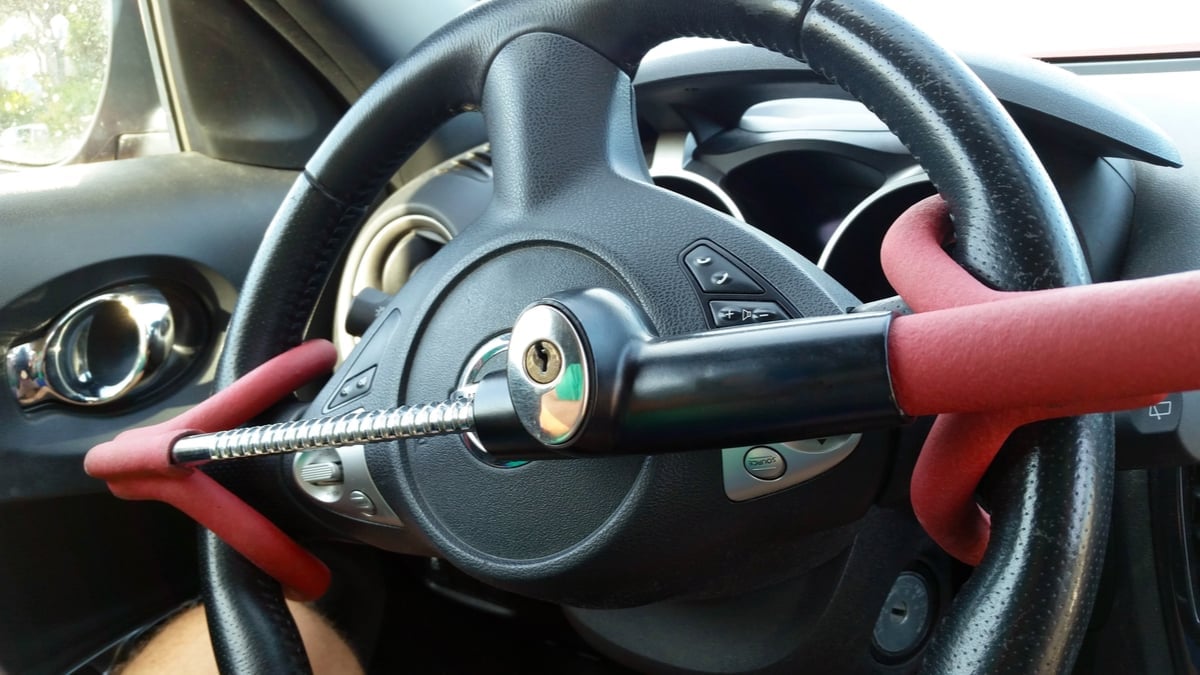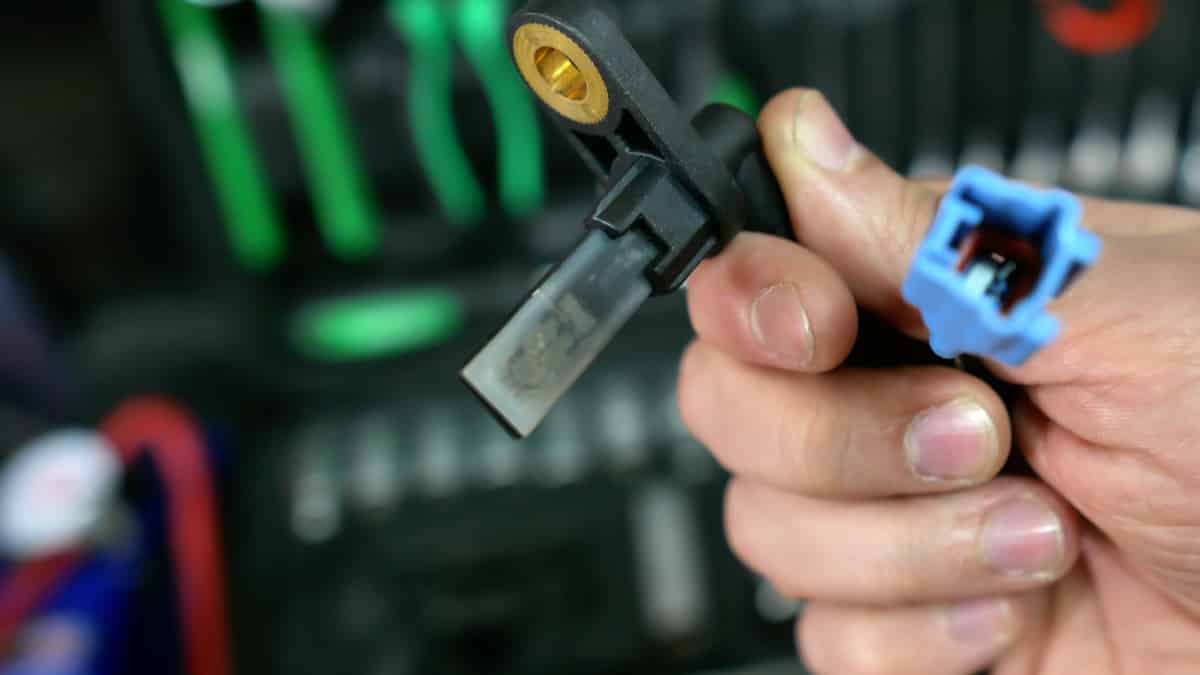Wheel alignments are a necessary part of driving a car. This vital service is considered to be part of the regular maintenance schedule and should be done often to ensure a smooth ride. It’s also important to know the symptoms of a bad wheel alignment, so you can take action before the situation becomes dire.
In this guide, we touch on the top bad wheel alignment symptoms and discuss the different types of measurements used. We also look at why the wheel alignment is important and answer your most-asked questions.
Symptoms Of A Bad Wheel Alignment
When the wheel alignment is bad, the vehicle may pull to one side and the steering wheel becomes misaligned. You may also notice excessive or uneven tire wear, loose or sloppy steering, vibrations at higher speeds, squealing tires and overall poor vehicle handling.
Let’s jump right into these possibilities.
1. Vehicle Pulls To One Side

When the tires are in good condition and the wheels are aligned, you should have no trouble driving straight down the road. On a level road, you would be able to take your hands off the steering wheel and still drive straight.
If the vehicle starts to pull to one side, there could be an issue with the alignment. In some cases, it can become so bad that you are wrestling with your steering wheel while you are driving just to keep the vehicle on the road.
2. Steering Wheel Not Aligned

The steering wheel position can also indicate whether an alignment is needed. In normal situations, the steering wheel would be centered, so when you are driving straight, it’s in the upright position. The logo on the steering wheel helps to provide a good reference.
If the steering wheel becomes uneven, it’s time to have the wheels aligned. The technician will check the steering wheel to make sure it is centered before you leave.
3. Uneven Tire Wear
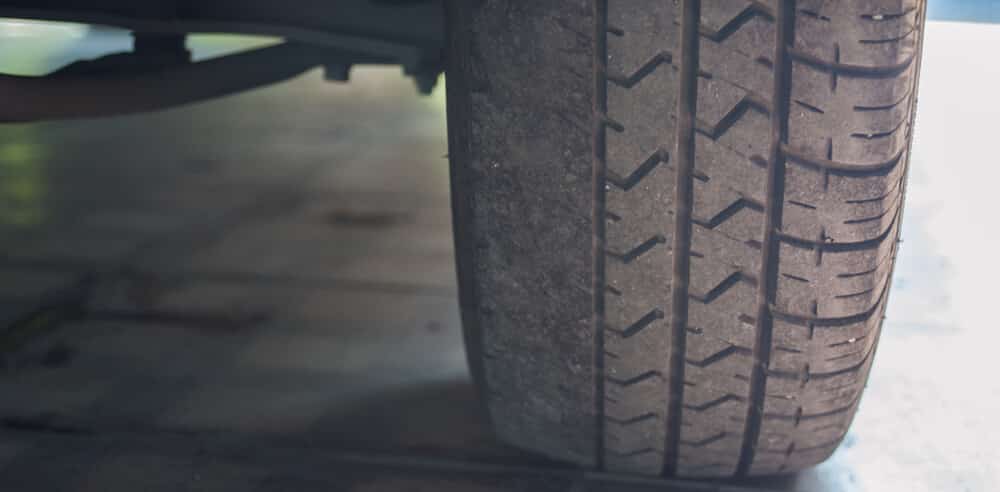
When the tread on your tires starts to wear in an uneven pattern, you know there’s an alignment issue or that your tires aren’t inflated properly. There could also be a bad suspension or steering component that’s leading to bad alignment.
Either way, you want to have the underlying problem resolved before the wear becomes so bad that you need to have the tires replaced prematurely. If the wear hasn’t gotten out of hand, you may still be able to perform a tire rotation with the alignment and get more life from them.
4. Excessive Tire Wear
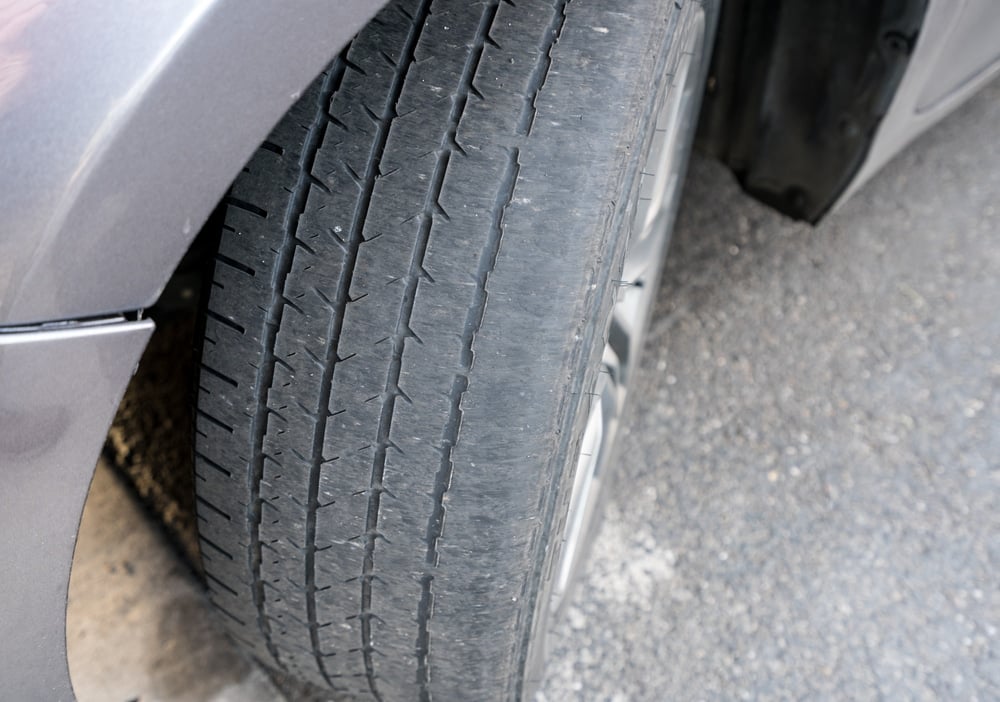
In addition to the strange tire tread patterns, there’s also the chance of the rubber wearing out faster than it should. With uneven contact against the road, parts of the tread can wear down rapidly.
Considering a wheel alignment doesn’t cost a lot, it doesn’t make sense to continue letting the tires wear out. After all, replacing the tires is going to be much more expensive.
5. Sloppy or Loose Steering
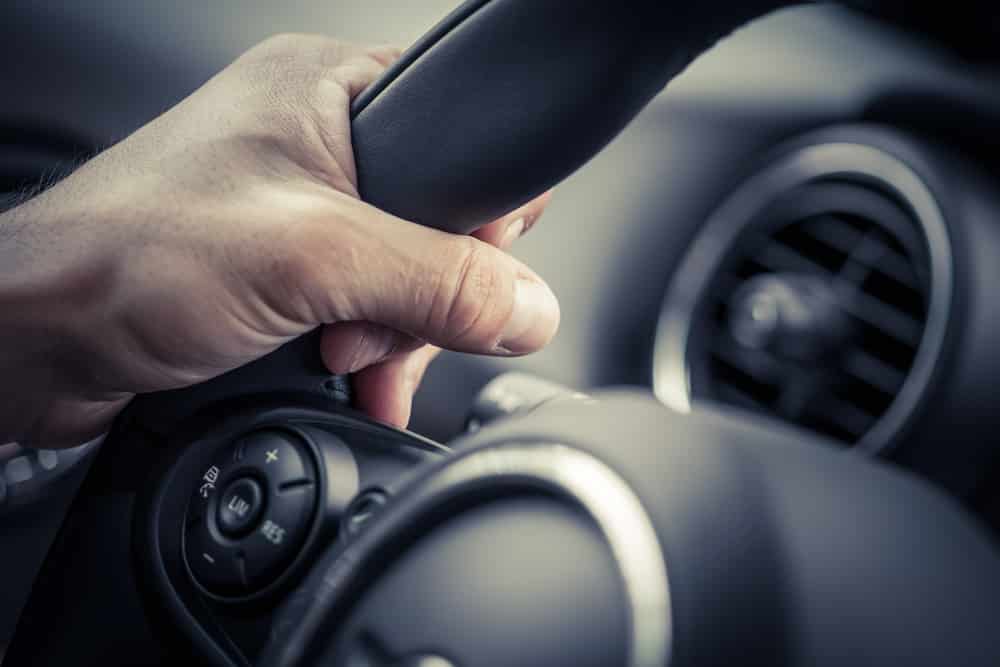
When the steering is loose, it is known as free play. When you go to take a turn, there’s a portion of the steering wheel that doesn’t seem to make a difference. You may have to turn further to get the wheels to match the movement.
There’s also the chance that the steering is sloppy, creating erratic movement. Either situation is dangerous and requires immediate attention since you aren’t in complete control of the vehicle.
6. Vehicle Shakes Or Vibrate At Higher Speeds
As you head down the road, the steering wheel shouldn’t be vibrating. If it is, there’s something wrong with the wheel alignment, tires, suspension or steering system. You could feel the vibration throughout the entire cabin in some cases.
As the situation gets worse, so will the vibration, so you don’t want to ignore it. Not only is the shaking a nuisance, but it can also cause you to lose control of the vehicle.
Related: 5 Causes of Steering Wheel Shakes While Driving
7. Tires Squealing

Tire squealing doesn’t just occur because you do a burnout. It can also happen if the wheels are misaligned. In this case, squealing is most common when you accelerate or turn, as the tire tread may not be making complete contact with the road.
However, you have to be careful to discern the type of squealing that’s occurring. Worn brake pads, bad suspension parts, loose belts and other mechanical malfunctions can also lead to a squealing sound. If in doubt, take your car to the mechanic for an inspection.
8. Poor Handling
For many of the reasons listed above, bad wheel alignment can also cause poor handling. For example, if the vibration gets bad enough, you’ll have trouble keeping the vehicle on the road.
The same can be said about the loose steering and a misaligned steering wheel. Whatever is causing the poor handling, it’s important to have it repaired before you are in an accident.
Types of Wheel Alignments
When the wheels get aligned, there are three different measurements used. Technicians measure the camber, toe and caster angles. Each varies with how it relates to the wheels, but all are necessary to be in line if you want the car to drive in a straight line.
1. Camber
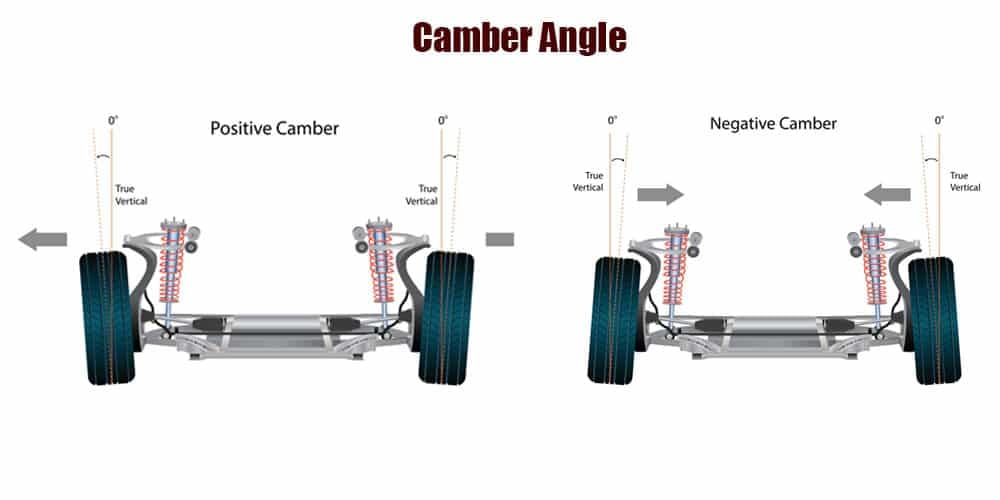
The camber measurement is described as the outward or inward tilt of the front tires when viewed from the front of the vehicle. Proper camber is needed to distribute the load across the tread, ensuring the best possible contact patch.
If the wheels are tilted too far inward, it’s described as having a negative camber. On the other hand, outward tilt is known as positive camber. The wrong camber measurement leads to more tread wear on the edges and when the wheels have positive camber, the vehicle pulls to the side that is further off measurement.
RELATED: Why Do Tuned Cars Have Very Inclined Wheels?
2. Toe In & Toe Out
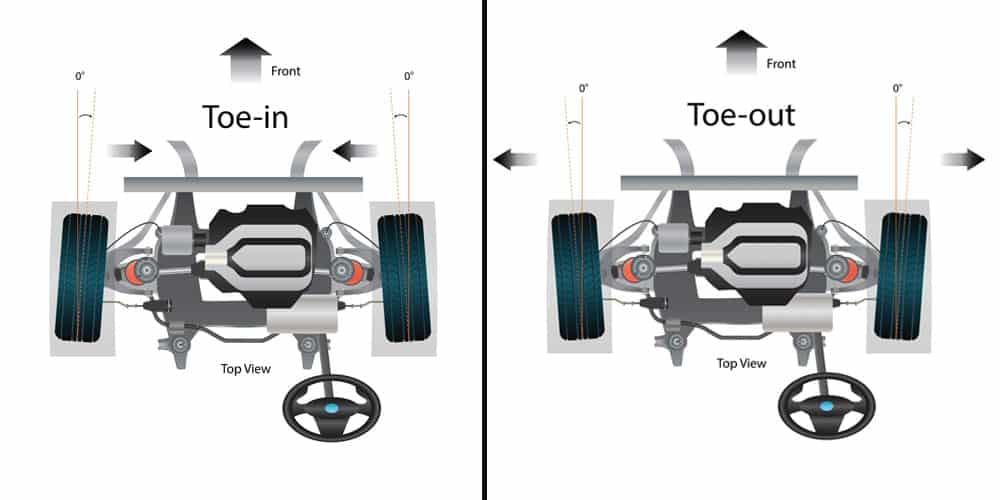
The toe measurement relates to the distance between the front and back of the front tires. Looking at the car from a bird’s eye view, the toe is the angle at which the front of the tires point.
Therefore, if the front of the tires is closer to one another or they are pointing inward, it’s known as toe-in. On the other hand, when the front of the tires point away from one another, it’s called toe-out.
3. Caster Angle
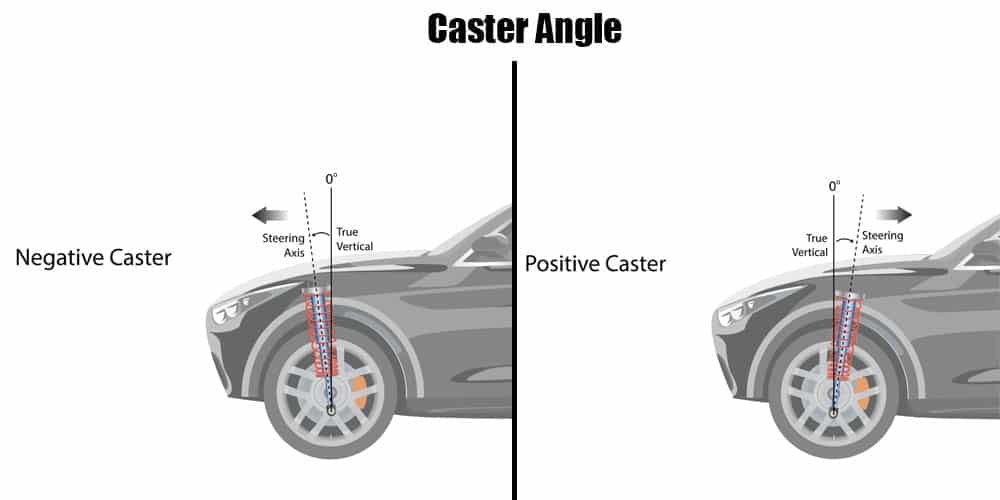
The caster angle is the slope of the wheels with the steering axis. Imagine a line running through the steering axis, intersecting the upper and lower steering pivot points, as viewed from the side.
The caster angle is shown in degrees, which can be either positive or negative. When the wheels have a positive caster angle, it means that the upper pivot point is behind the lower one. The negative caster angle shows that the upper pivot point is forward in comparison to the lower one.
RELATED: How long does a wheel alignment take?
Why Wheel Alignments Are Important
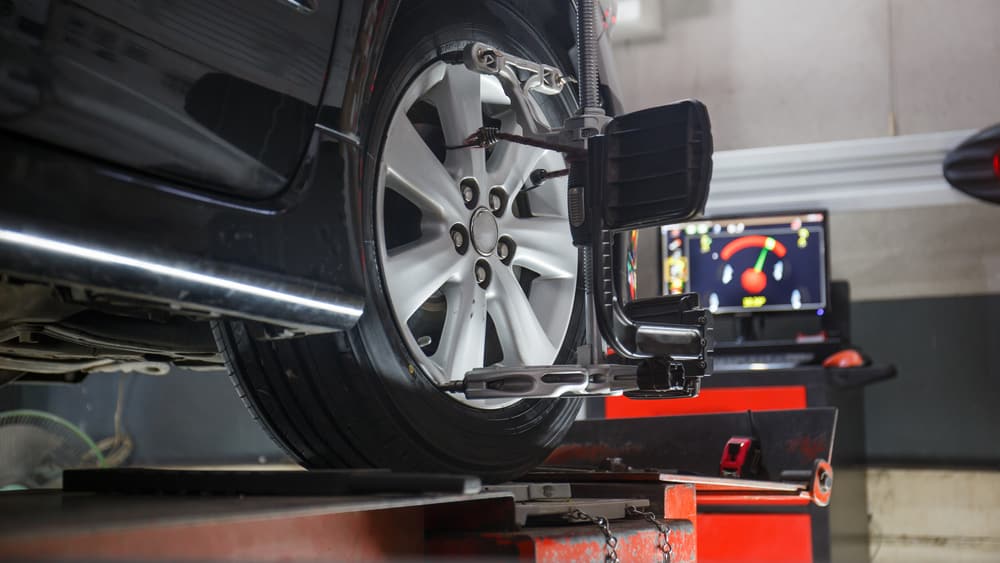
It’s easy to overlook the importance of regular wheel alignments. After all, if nothing seems to be broken, why fix it? However, you don’t want to wait until you notice significant handling issues to have the wheels aligned. Over time, the alignment is only going to get worse, not better.
Here are some benefits to getting regular wheel alignments, which usually cost no more than $100 for two wheels.
- Longer-lasting tires: With the tread wearing normally, you won’t have to worry about replacing the tires prematurely. Considering tires can cost well over $100 a piece, this is a money-saving benefit.
- Preventing mechanical wear: Along with the tires, bad wheel alignment can put additional stress on the suspension. These parts are also pricey to replace, but premature wear is easy to prevent with wheel alignments.
- Better fuel efficiency: With the wheels aligned and the car driving in a straight line, you’ll spend less money at the fuel pump.
- Smoother ride: Not only will you have fewer vibrations while driving, but the steering is easy to control when the wheels are aligned. With better control, you’ll avoid unnecessary accidents.
Aside from those benefits, the average wheel alignment can take one hour or less. You can stop by your local auto repair shop and wait for the vehicle without too much inconvenience. Some locations also allow you to make an appointment.
Is it OK to drive with bad wheel alignment?
No, even if you feel comfortable driving with the alignment off, you shouldn’t. The poor alignment leads to additional wear to the tires and suspension. It can also cause vibrations and make it difficult to control the vehicle. It’s best to stop by your local auto repair center and have the wheels aligned right away.
What does a bad alignment feel like?
When the alignment is poor, the car may pull to one side. It becomes difficult to drive in a straight line, even on a flat surface. You may notice loose or sloppy steering. Additionally, the vehicle starts to shake, which can be felt through the steering wheel. Finally, wear to the tires and suspension parts starts to occur.
Can I align my own car?
You could perform a wheel alignment at home with four jack stands, a tape measure, a level spot and some string. However, it doesn’t cost a lot of money to have the wheels professionally aligned. Considering the shops have alignment racks, it’s a more accurate way of ensuring everything is straight.
How often should I get an alignment?
On average, you may only need a wheel alignment every two years. However, it may be necessary to align the wheels if you’ve recently hit something with force, such as a sidewalk or pothole. You may also need an alignment after you get new tires installed or if you notice any strange drivability issues.
Do I need an alignment after replacing the tires?
It’s not necessary to get an alignment when you install new tires, but it’s often recommended. Poor wheel alignment can make the new tires wear faster than normal and you don’t want to throw that money away. For just a little extra money, make sure everything is in line to protect your investment.
Can a bad alignment cause shaking?
Yes, when the tires aren’t making contact with the road as they should, you will start to feel shaking while driving. This vibration can often be felt through the steering wheel. If it gets bad enough, you may lose control of the vehicle and cause an accident.
Of all the things that could go wrong with your car, a bad wheel alignment is not a big issue. With a quick stop at your local shop, your vehicle can be driving in a straight line once again. The best part is that the wheel alignment doesn’t cost a lot of money.
Compared to what you would spend to replace the tires prematurely or to fix the suspension after it breaks, it makes more sense to keep up with regular wheel alignments. Put a reminder in your calendar and pay attention to the symptoms that it’s time for an alignment so you don’t neglect the valuable service.
Categories: Suspension
